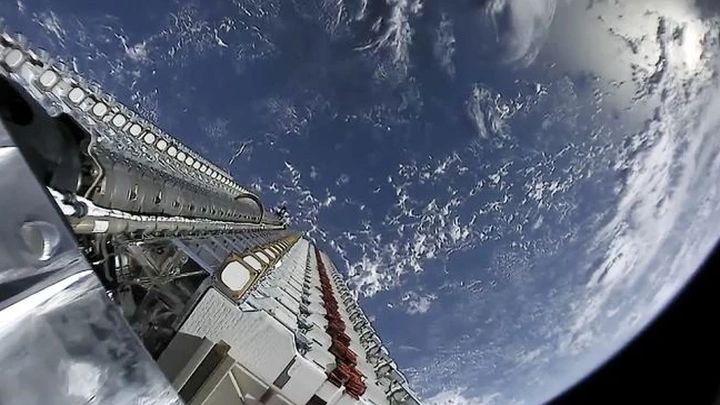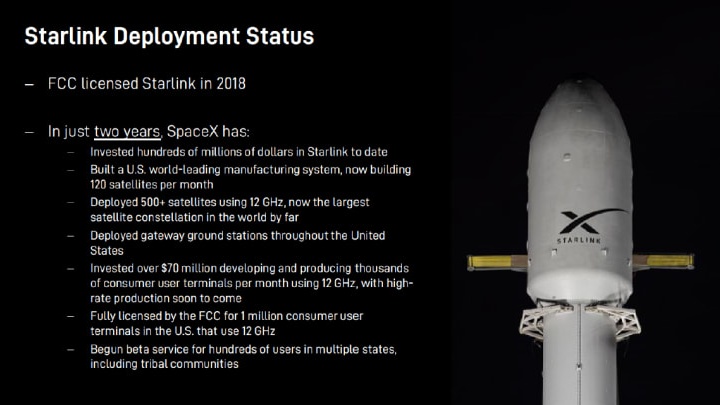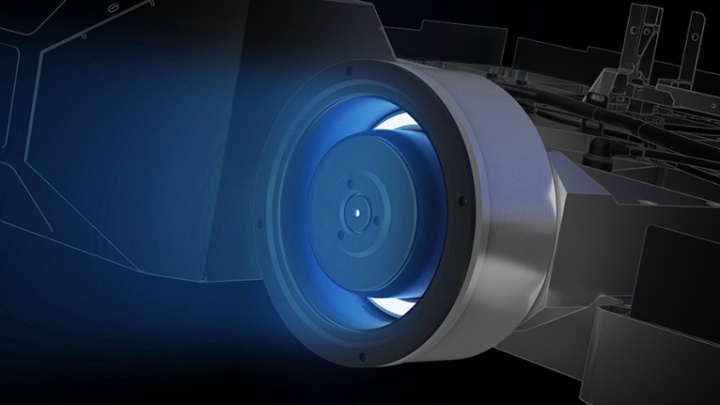SpaceX Manufactures 120 Starlink Satellites per Month
SpaceX continues the Starlink project to provide Internet access in every corner of the Earth. Currently, as many as 120 satellites per month are produced, an unprecedented result in this industry sector.

- SpaceX manufactures Starlink satellites at a rate of 120 units per month - as shown by a slide from July presentation;
- 'Such dynamic production is the result of great interest,' says Elon Musk;
- There are already nearly 600 Starlink satellites in the orbit.
The Starlink project is gaining momentum. This system is supposed to provide the Internet to any place on Earth, also to regions that have been deprived of it so far. Access to the network is to be achieved by radio thanks to 12 thousand small satellites, placed on a low orbit around the Earth (about 550 km above the surface). This is a large number, but it turns out that thanks to SpaceX's production efficiency, the project can be completed faster than we think.
According to one of the slides of the July presentation (source: CNBC), SpaceX currently produces 120 Starlink satellites per month. At the same time, 60 devices are being sent into orbit. This is how much the Falcon 9 rocket takes on board and its Starlink flights take place once a month. This is due to its lifting capacity, which is just over 20 tons, and the satellite weighs 260 kg, so 60 pieces is almost 16 tons (there is some reserve, but sometimes other devices are sent into orbit besides Starlink satellites).

120 orbital devices per month is an achievement unprecedented in the satellite industry. For comparison, Iridium, a system that has so far held the record for the largest commercial network of satellites, was 'produced' at a rate of 3 units per month. Even taking into account the three times larger size of each of them, SpaceX's pace is still impressive.
Such rapid production is explained by Elon Musk with considerable interest. He claims that almost 700 thousand entities are already willing to use the Internet provided by Starlink (source). Musk is therefore exploring ways to increase the number of authorised terminals that users will be able to use for communications - from 1 million to 5 million.

SpaceX has so far invested hundreds of millions of dollars in the project. The design of ground equipment has already taken 70 million dollars, and its production is only just beginning to gain momentum. Communication between the terminal and the satellite will use 12 GHz frequency, which has already provoked opposition from mobile operators licensed to use this band in 5G (although this is more due to the lowering of orbit used by Starlinks).
Trivia
After the launch of the Iridium satellite system, the phenomenon of excessive visibility began to appear. This is a problem similar to the one that caused controversy after the launch of the first Starlinks series. Antennas of Iridium devices were highly glossy, which was manifested by visible flashes, so-called flares in the sky occurring in certain conditions. These flares were so bright that they posed a threat to sensitive telescopes. Fortunately, they were predictable and special systems were developed to facilitate this. Musk solved this problem a little differently, the next series of Starlink satellites are no longer shiny and should not be so visible in the night sky.
- “It’s better than Wikipedia,” Elon Musk announces Grokipedia 0.1 release, but people are already spotting flaws
- Elon Musk and Sam Altman argue. It started with a Tesla contract that remained unfulfilled for 7 years
- Problems with X (formerly Twitter) and ChatGPT (unlock challenges) continue as Cloudflare Global Network is experiencing issues
0

Author: Arkadiusz Strzala
His adventure in writing began with his own blog and contributing to one of the early forums (in the olden days of Wireless Application Protocol). An electrical engineer by profession, he has a passion for technology, constructing and, of course, playing computer games. He has been a newsman and writer for Gamepressure since April 2020. He specializes in energy and space tech. However, he does not shy away from more relaxed matters every now and then. He loves watching science-fiction movies and car channels on YouTube. He mainly plays on the PC, although he has modest console experience too. He prefers real-time strategies, FPS and all sorts of simulators.
Latest News
- End of remote work and 60 hours a week. Demo of Naughty Dog's new game was born amid a crunch atmosphere
- She's the new Lara Croft, but she still lives in fear. Trauma after Perfect Dark changed the actress' approach to the industry
- „A lot has become lost in translation.” Swen Vincke suggests that the scandal surrounding Divinity is a big misunderstanding
- Stuck in development limbo for years, ARK 2 is now planned for 2028
- Few people know about it, but it's an RPG mixing Dark Souls and NieR that has received excellent reviews on Steam, and its first DLC will be released soon

